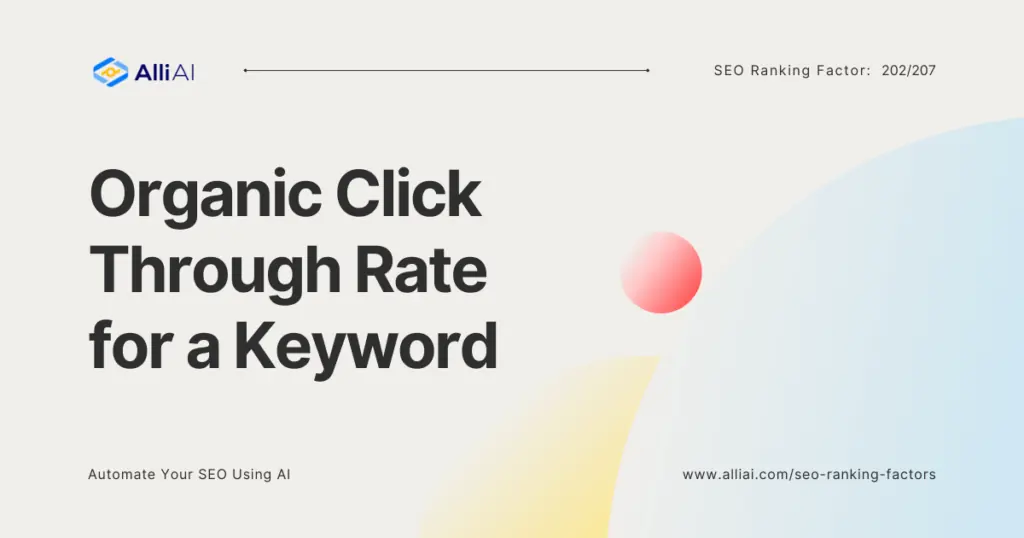The Ultimate Overview to CTR Adjustment: Approaches for Improving Online Search Engine Presence
In the ever-evolving landscape of search engine optimization, understanding the art of click-through rate (CTR) control has come to be increasingly important for services making every effort to improve their on-line exposure. As search engines continue to focus on customer engagement metrics, recognizing exactly how to purposefully influence CTR can substantially influence a website's performance in search outcomes.
Recognizing CTR and Its Effect

A high CTR shows that a significant part of individuals find the link compelling and appropriate, which can cause improved positions on internet search engine. On the other hand, a low CTR may signify that the web link is not resonating with individuals, possibly leading to a decrease in positions. Comprehending CTR patterns and patterns can supply important understandings right into individual actions, preferences, and the performance of different advertising strategies.
Essentially, tracking and evaluating CTR data is important for enhancing online search engine visibility and creating efficient digital advertising campaigns (ctr manipulation press release). By leveraging this metric, organizations can tweak their strategies to attract more clicks, enhance customer engagement, and eventually enhance their on the internet visibility
Maximizing Meta Tags for Higher Click-Through Rates
With a keen focus on enhancing online search engine presence through critical optimization methods, one essential facet exists in the careful crafting of meta tags to raise click-through rates efficiently. Meta tags, consisting of the meta title and meta description, play a crucial duty fit just how a web site shows up in internet search engine outcomes. Optimizing these tags involves integrating relevant key words that precisely reflect the content of the webpage while also attracting individuals' search intent.
To maximize meta tags for higher click-through prices, it is essential to keep them concise, compelling, and lined up with the material on the page. The meta title must be attention-grabbing, clearly indicating the page's topic and worth proposition. On the other hand, the meta description works as a brief recap that lures users to click with by offering a glance of what they can expect on the web page. Additionally, integrating distinct marketing factors, calls to activity, or special offers within the meta summary can even more boost its appeal and urge clicks. By meticulously crafting meta tags, websites can increase their presence in search results page and draw in even more organic traffic.
Crafting Compelling Title Tags and Meta Summaries

When crafting title tags and meta summaries, it's crucial to remember the individual's intent and make certain that the language used is pertinent and compelling to their search query. By enhancing these aspects, websites can boost their click-through rates and inevitably improve their online search engine presence. Furthermore, on a regular basis keeping track of and examining different variations of title tags and meta summaries can assist identify which ones are most efficient in driving traffic to the website.
Leveraging Schema Markup for Enhanced Exposure
To enhance an internet site's visibility and improve its efficiency in internet search engine results, leveraging schema markup can be a tactical and reliable technique. Schema markup is a form of microdata that can be added to a website's HTML to give search engines with even more detailed details about the web content on that particular web basics page. By incorporating schema markup, websites can boost the means their listings show up in search engine results, making them extra aesthetically attractive and insightful to individuals.
One significant advantage of making use of schema markup is that it can raise the chance of rich fragments being presented together with a site's search result. Rich snippets are added items of information, such as star rankings, product costs, or event days, that can make a listing attract attention and attract even more clicks from users. This not only boosts the presence of an internet site however also boosts its reputation and importance in the eyes of search engines.
Surveillance and Examining CTR Performance
Having established the advantages of leveraging schema markup for enhanced presence in online search engine results, the next crucial action includes monitoring and examining the performance of click-through prices (CTR) By tracking CTR metrics, site proprietors can acquire useful insights right into exactly how users interact with their search engine listings. Numerous devices, such as Google Analytics and Look Console, offer comprehensive CTR data that can be analyzed to understand which key words, meta descriptions, or titles are driving the most traffic.
Monitoring CTR efficiency permits website proprietors to identify underperforming web pages or listings that may require optimization. It additionally assists in analyzing the effectiveness of any CTR control methods applied. Consistently keeping track of CTR trends can highlight fluctuations in customer habits, permitting timely adjustments to boost search engine visibility.
Additionally, assessing CTR information together with other metrics, such as bounce price and time on page, can supply a comprehensive understanding of individual engagement. This holistic approach enables site proprietors to make enlightened choices to boost their general internet search engine exposure and customer experience.

Final Thought
Finally, understanding and controling CTR can dramatically influence online search engine visibility. By enhancing meta tags, crafting compelling titles and descriptions, leveraging schema markup, and monitoring efficiency, services can boost their online presence. It is important to continuously analyze CTR information to make and determine patterns educated decisions to drive traffic and boost presence in internet search engine results web pages. Eventually, implementing these methods can bring about a much more effective on the internet visibility and enhanced internet search engine rankings.
In the ever-evolving landscape of search engine optimization, grasping the art of click-through rate (CTR) adjustment has become increasingly vital for advice companies aiming to boost their on-line presence. As search engines proceed to focus on individual involvement look at more info metrics, understanding just how to strategically influence CTR can considerably influence a site's efficiency in search outcomes. In the realm of search engine optimization (SEO), CTR plays a considerable duty in figuring out the performance of a site's presence on search engine results web pages (SERPs)
Having actually developed the benefits of leveraging schema markup for improved presence in search engine results, the next essential step involves surveillance and assessing the performance of click-through rates (CTR) Regularly keeping an eye on CTR fads can highlight fluctuations in customer behavior, permitting for timely adjustments to enhance search engine presence. (GMB CTR manipulation)